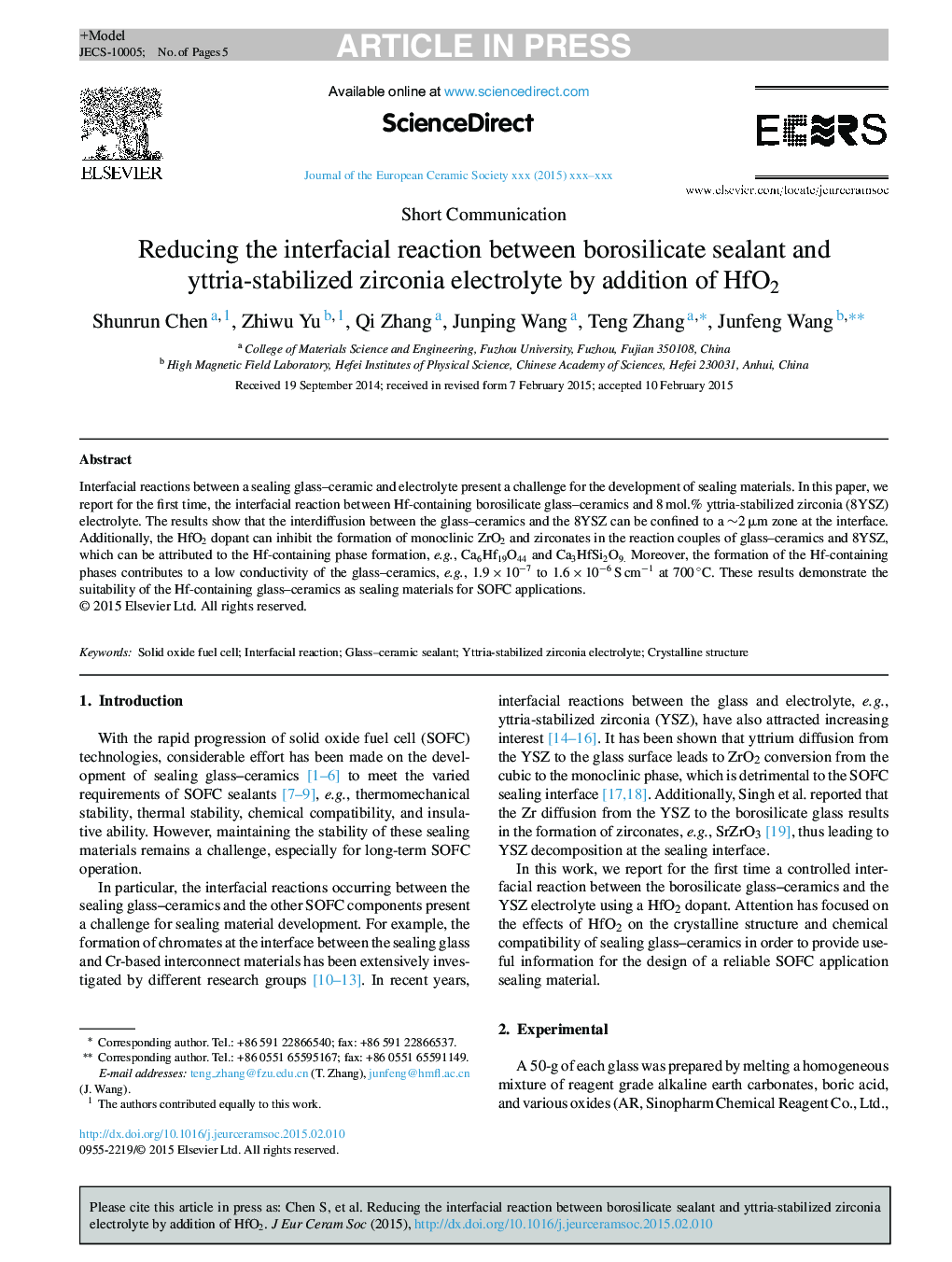| Article ID | Journal | Published Year | Pages | File Type |
|---|---|---|---|---|
| 10629574 | Journal of the European Ceramic Society | 2015 | 5 Pages |
Abstract
Interfacial reactions between a sealing glass-ceramic and electrolyte present a challenge for the development of sealing materials. In this paper, we report for the first time, the interfacial reaction between Hf-containing borosilicate glass-ceramics and 8 mol.% yttria-stabilized zirconia (8YSZ) electrolyte. The results show that the interdiffusion between the glass-ceramics and the 8YSZ can be confined to a â¼2 μm zone at the interface. Additionally, the HfO2 dopant can inhibit the formation of monoclinic ZrO2 and zirconates in the reaction couples of glass-ceramics and 8YSZ, which can be attributed to the Hf-containing phase formation, e.g., Ca6Hf19O44 and Ca3HfSi2O9. Moreover, the formation of the Hf-containing phases contributes to a low conductivity of the glass-ceramics, e.g., 1.9 Ã 10â7 to 1.6 Ã 10â6 S cmâ1 at 700 °C. These results demonstrate the suitability of the Hf-containing glass-ceramics as sealing materials for SOFC applications.
Related Topics
Physical Sciences and Engineering
Materials Science
Ceramics and Composites
Authors
Shunrun Chen, Zhiwu Yu, Qi Zhang, Junping Wang, Teng Zhang, Junfeng Wang,
